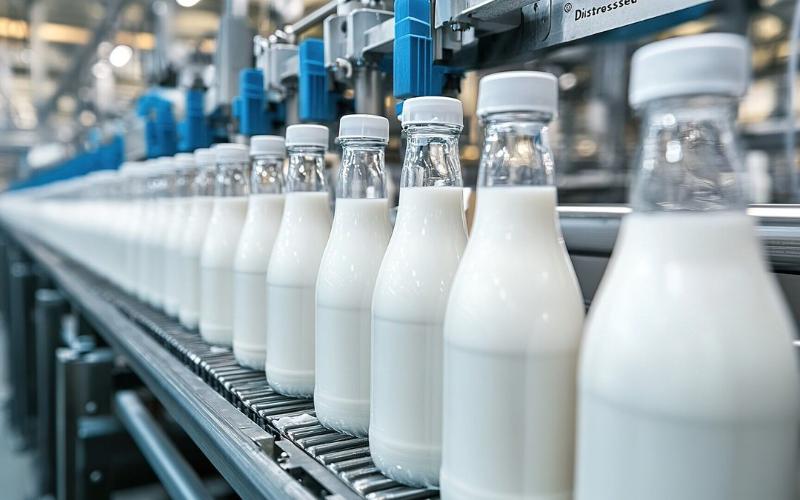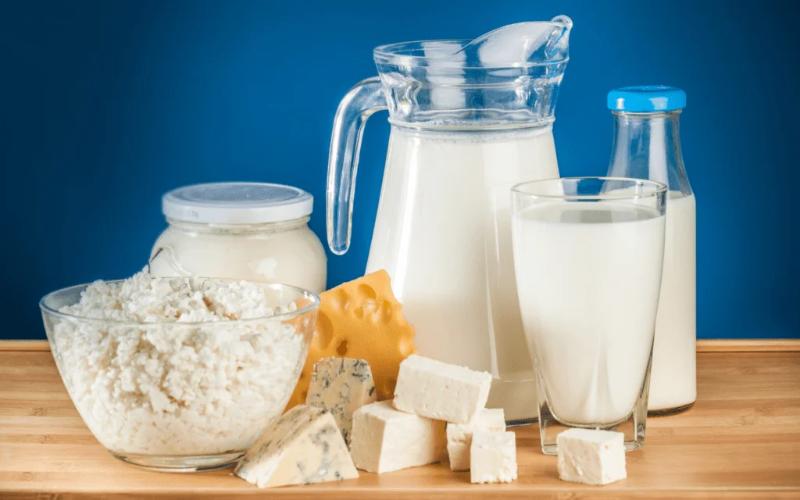Innovative Dairy Products Spearhead Growth in the Refrigerated Aisle Despite Declining Milk Sale
Source: The DairyNews
The U.S. dairy sector is experiencing robust growth, driven by innovative products in cheese, butter, and yogurt, even as traditional fluid milk sales decline. According to recent data from Circana, the refrigerated dairy aisle remains the largest retail category, boasting $76 billion in sales last year. Over the past three years, the sector has seen a 15.4% increase, adding $10.1 billion to its sales figures.

CoBank's Knowledge Exchange highlights that the retail dairy market's future looks promising with considerable growth potential as consumer preferences shift towards healthy, convenient snacking options. Cheese and butter are particularly poised for further growth, with new dairy-based products tapping into the healthy snacking megatrend. These include low-fat cheeses, specialty yogurts, and functional dairy drinks, all packaged for convenience.
Cheese remains a cornerstone of dairy consumption in the U.S., where per capita cheese consumption has doubled over the last 20 years to 40 pounds in 2022. This figure still trails behind many European countries, suggesting significant growth potential. The U.S. market has seen a surge in demand for Hispanic-style cheeses, reflecting changing demographics and consumer tastes.
Butter consumption in the U.S. has also seen a resurgence, with a 43% increase in per capita consumption over the last 25 years. The trend towards European-style butter, which contains 83% butterfat compared to the traditional 80% in American butter, illustrates a shift in consumer preferences towards richer products. U.S. manufacturers are responding by adapting their production lines to meet this demand.
Yogurt has transitioned from a breakfast staple to a versatile snack suitable for any time of the day, contributing to a 142% increase in per capita consumption over the past 25 years. Greek yogurt leads this growth, with brands like Danone reporting increased demand for high-protein, low-calorie options. This uptick is partly attributed to the rising use of weight-loss medications, as consumers increasingly turn to yogurt to manage weight and enhance overall well-being.
Private label dairy products are gaining traction, outperforming premium brands in 10 of the 15 dairy categories tracked by Circana. Store brands in yogurt, cream cheese, and cream are making significant market inroads, driven by consumer perceptions of value and quality.
Billy Roberts, a food and beverage economist at CoBank, emphasizes that the movement towards clean labels and minimally processed foods is a significant advantage for dairy products, particularly among younger, health-conscious consumers. This trend, observed from the plant-based food sector, shows that simpler ingredient lists are increasingly favored.
As the dairy industry continues to innovate and adapt to consumer trends, it remains a dynamic and essential part of the U.S. food landscape, well-positioned for continued growth and expansion.
Cheese remains a cornerstone of dairy consumption in the U.S., where per capita cheese consumption has doubled over the last 20 years to 40 pounds in 2022. This figure still trails behind many European countries, suggesting significant growth potential. The U.S. market has seen a surge in demand for Hispanic-style cheeses, reflecting changing demographics and consumer tastes.
Butter consumption in the U.S. has also seen a resurgence, with a 43% increase in per capita consumption over the last 25 years. The trend towards European-style butter, which contains 83% butterfat compared to the traditional 80% in American butter, illustrates a shift in consumer preferences towards richer products. U.S. manufacturers are responding by adapting their production lines to meet this demand.
Yogurt has transitioned from a breakfast staple to a versatile snack suitable for any time of the day, contributing to a 142% increase in per capita consumption over the past 25 years. Greek yogurt leads this growth, with brands like Danone reporting increased demand for high-protein, low-calorie options. This uptick is partly attributed to the rising use of weight-loss medications, as consumers increasingly turn to yogurt to manage weight and enhance overall well-being.
Private label dairy products are gaining traction, outperforming premium brands in 10 of the 15 dairy categories tracked by Circana. Store brands in yogurt, cream cheese, and cream are making significant market inroads, driven by consumer perceptions of value and quality.
Billy Roberts, a food and beverage economist at CoBank, emphasizes that the movement towards clean labels and minimally processed foods is a significant advantage for dairy products, particularly among younger, health-conscious consumers. This trend, observed from the plant-based food sector, shows that simpler ingredient lists are increasingly favored.
As the dairy industry continues to innovate and adapt to consumer trends, it remains a dynamic and essential part of the U.S. food landscape, well-positioned for continued growth and expansion.














